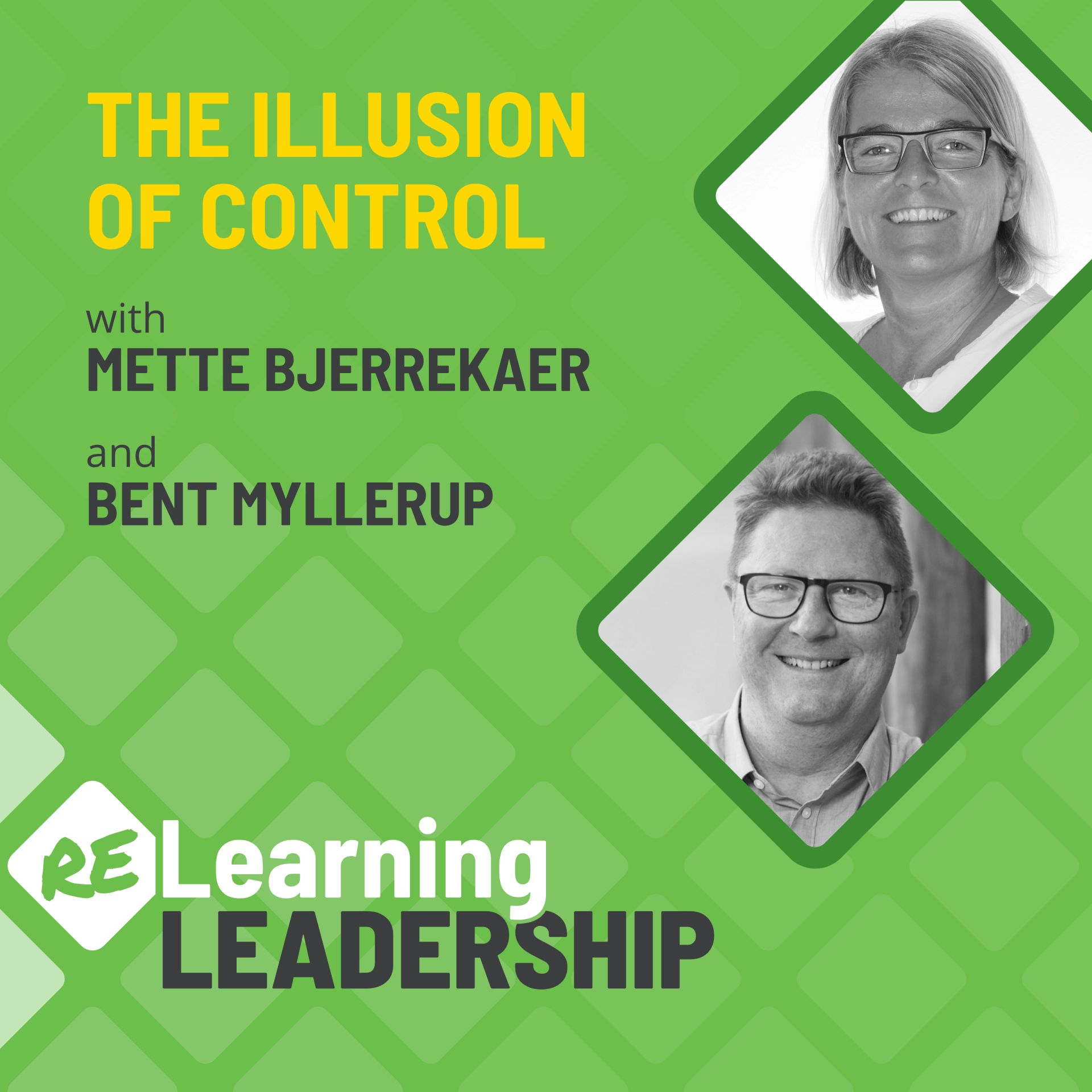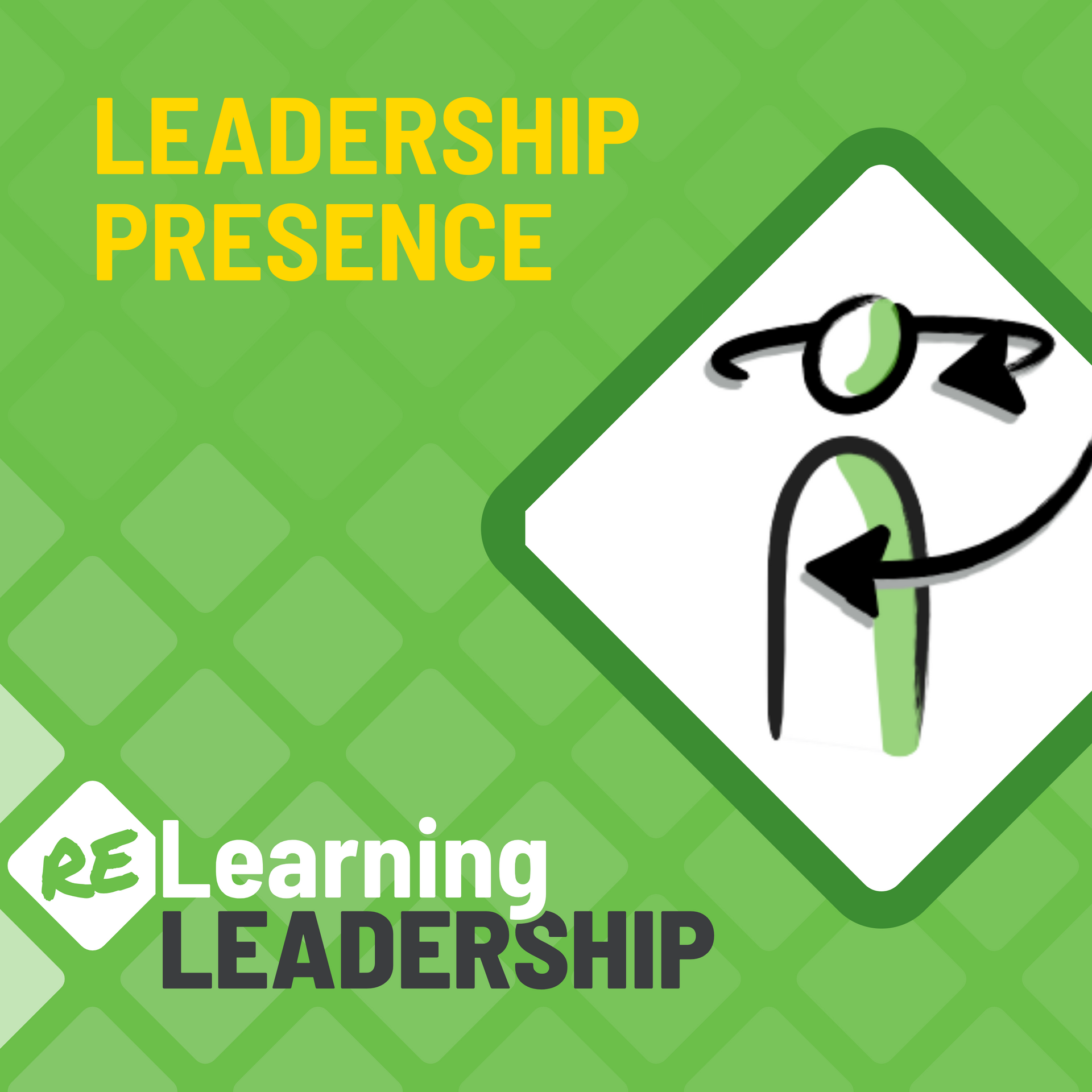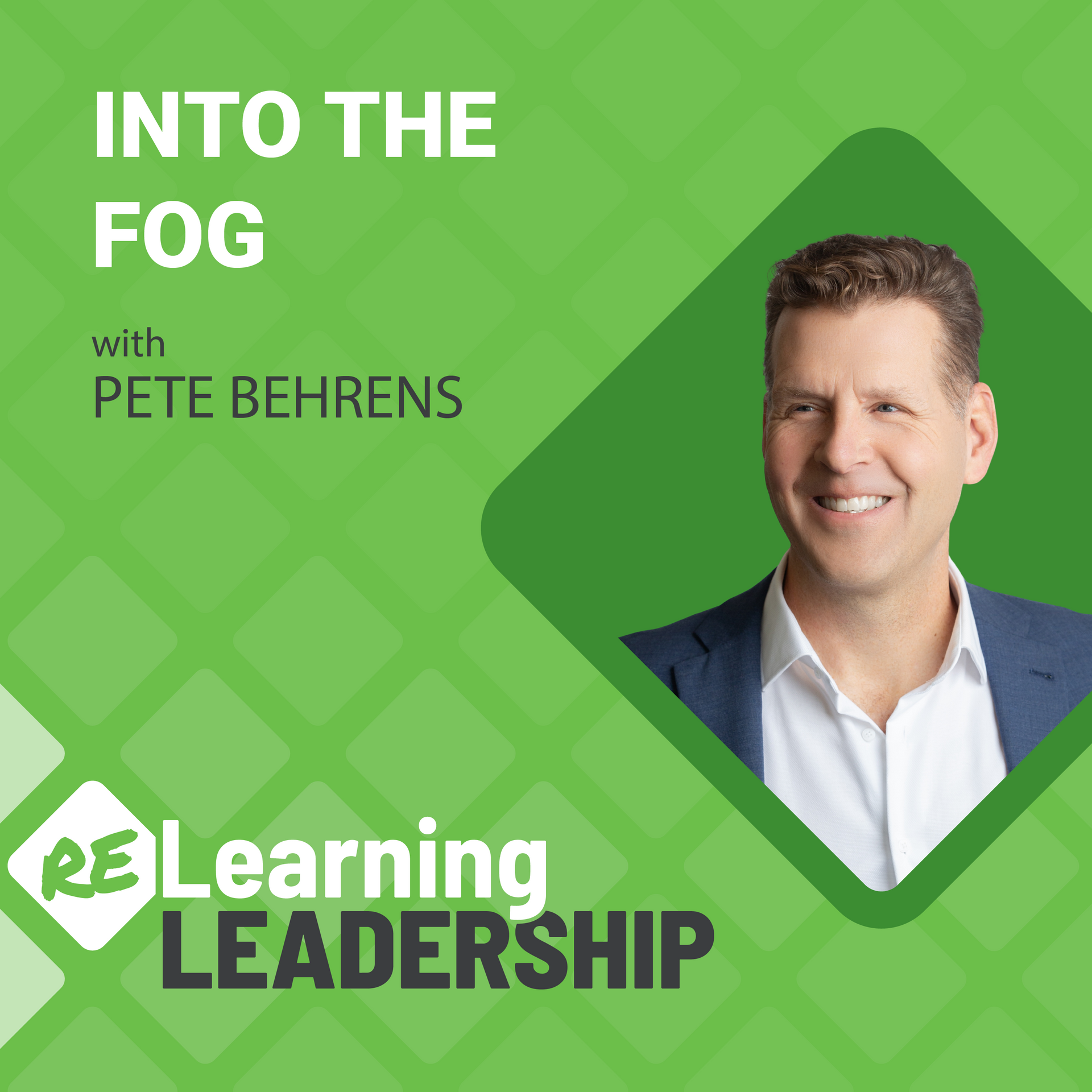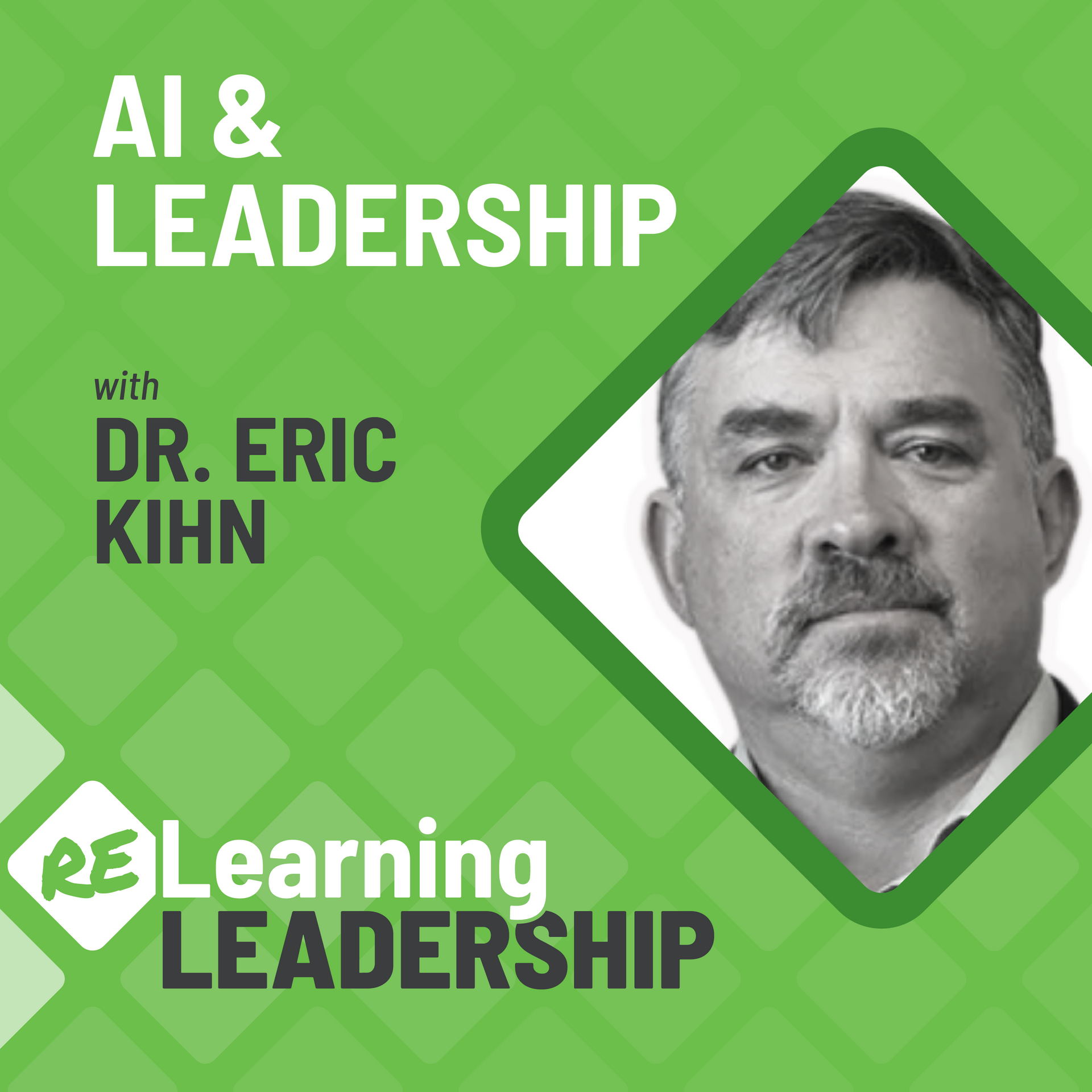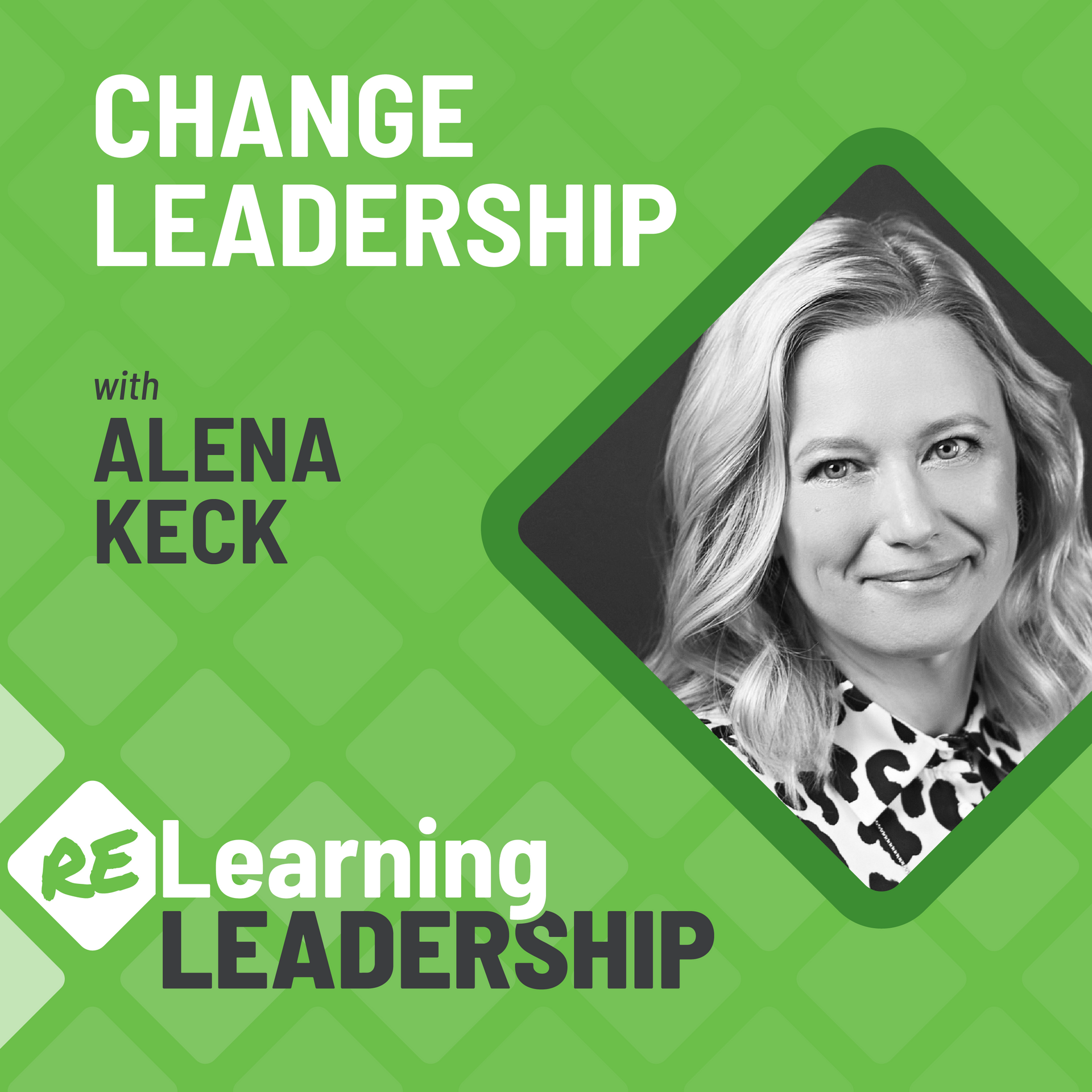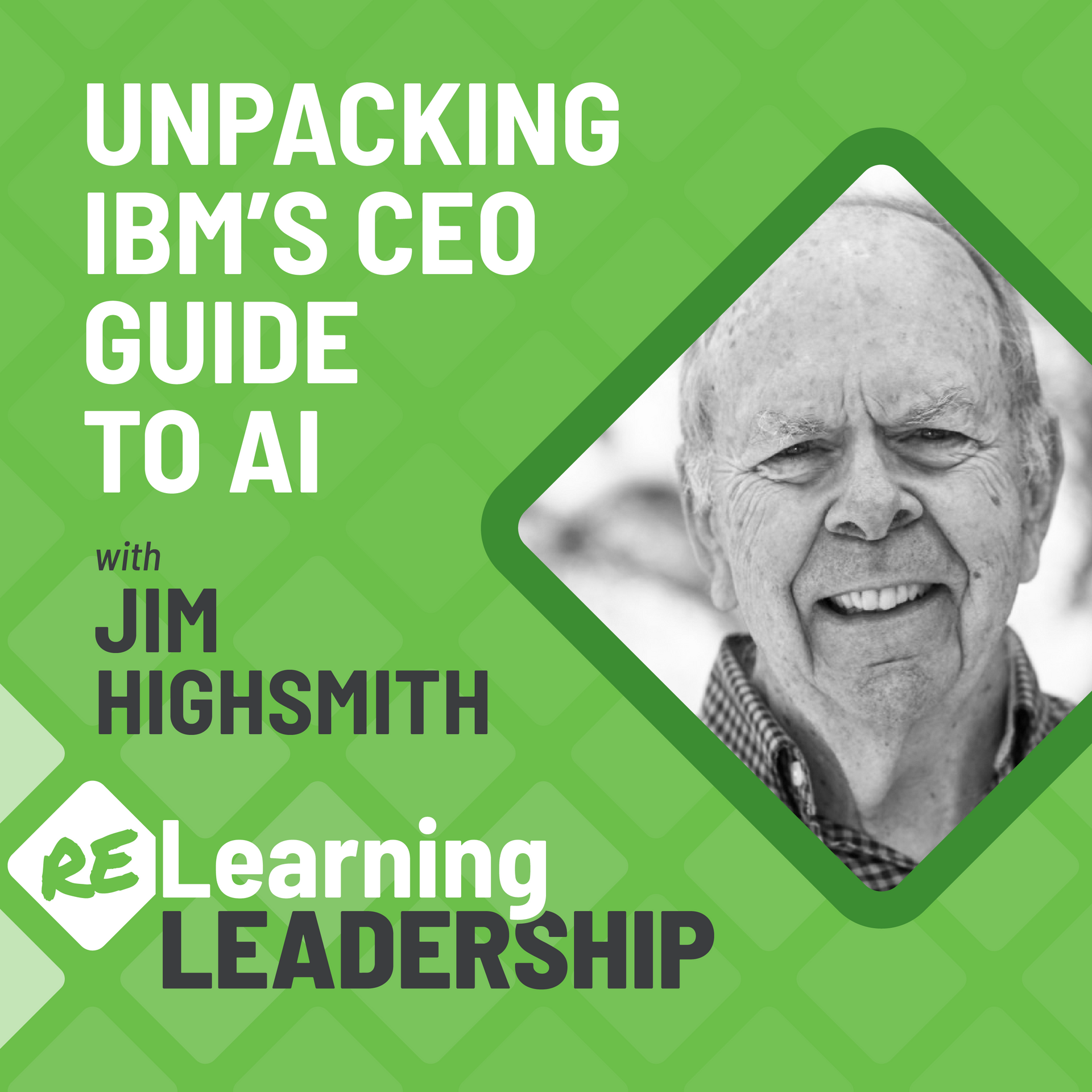47: How To Be An Agile Leader
What does it take to be an agile leader?
Welcome to Season 4 of the ReLearning Leadership podcast!
Pete kicks off the season with an exploration of the four key competencies that define an agile leader.
Relearning from this episode…
4 Core Capabilities of an Agile Leader
- Be Clear: Keep the Vision
Without clarity in vision, agility in execution is simply wasted energy. - Be Curious: Open Your Mindset
Be open to new possibilities, pathways, perspectives — even to being wrong! - Be Courageous: Take Bold Steps
It requires courage to take risks and experiment — to trust and even delegate authority to others. - Be Contemplative: Reflect Frequently
Our biggest weakness as humans is our own cognitive bias. There’s no substitute for feedback and data for learning and growth.
Episode Transcript
Pete Behrens:
The core of an agile leader is an open mindset, right? Open to possibilities, open to new pathways, open to other perspectives, open to even being wrong.
What does it take to become an agile leader?
Welcome to another episode of (Re)Learning Leadership, where we explore a specific leadership challenge and break it down to help improve your leadership, your organization, and, just possibly, your personal life.
I’m Pete Behrens, and today I want to explore the core of what it means to be an agile leader and how to become one.
Sound interesting? Great! Let’s dive in.
Now, agility is a competency of change and adaptation. The word is often defined as the ability to move quickly and easily. Right? Like a dog navigating an obstacle course. There’s a second half of the definition, however. It is the ability to think and understand quickly.
So, agility really has both movement and thought, right? Those two combined. And it’s actually the thought that I believe is more valuable.
Why? Well, without agility in thought, agility of movement is simply wasted energy, like that dog chasing squirrels. Squirrel! Squirrel! Squirrel!
So, with this in mind, l want to explore the four key competencies in becoming a more agile leader.
1. Be Clear: Keep the Vision
What?!?
Agility is often seen as the antithesis of vision, when, in fact, it’s in service to vision.
Without clarity in vision, agility in execution is simply wasted energy, like that dog chasing squirrels. It’s only when you add vision that decisions start to have something to measure them against. It’s like getting in your car and driving without having a goal in mind. Turning left, turning right, going straight ahead—it makes no difference until you add that goal.
In fact, in more complex environments—and this is where agile leadership really excels—the road ahead is quite foggy, right? It obscures our view, and people can feel very lost or disconnected. And it’s the vision that serves to help connect or reconnect people when they start to feel lost navigating through that fog.
Now, that’s not to say that the vision never changes. In fact, agile leaders are more willing and capable of reviewing and adjusting that vision more frequently. In fact, a yearly visioning cycle will include many subcycles—quarterly, monthly, bi-weekly—to review, align, and adjust that destination.
2. Be Curious: Open Your Mindset
Now, you might be surprised, but I’m going to bring the word vision back into play. In Part One, or Step One, we said that vision serves as a goal or objective to help us connect or reconnect as we might get off-course in the fog. But vision serves a second role, right? The ability to see in the movement. Agility in movement requires the ability to see, discern, and then act–all in a moment's notice. And at the root of that is the ability to see, not just with your eyes, but with your mind.
Now, in more concrete environments, we can use our past experiences and our past education to help guide what to do, when to do it, how to do it, right? These repeatable things that we’ve leveraged over time to help us navigate those worlds. However, in a more complex environment—again, where agile leadership is the best place for—these past experiences, this past education might help us, they may not help us, and, certainly, they’re going to be less applicable. Right?
It’s like when we were in school, and they said, “What you’re learning is less important than learning how to learn.” Now, while we might have joked about this in school, it’s coming back to us as an agile leader. Agile leaders are specialists in scanning their environment, seeing more options available to them, getting others involved in discerning what is the most effective option in this moment, and then taking clear action, all in real time. All at a moment’s notice.
So, the core of an agile leader is an open mindset, right? Open to possibilities, open to new pathways, open to other perspectives, open to even being wrong. You know, at the core, an agile leader is like a scientist, with kid-like curiosity.
3. Be Courageous: Take Bold Steps
Yoda, you know, that master Jedi coach in Star Wars, who was instructing Luke in his Jedi training, said “Do or do not. There is no try.” Well, with this statement, Yoda was teaching Luke that if there was any significant goal he was going to achieve in life, it was going to take action and effort. It simply wouldn’t happen by thinking about it or just waiting for it to occur, right? This is sage advice for agile leaders operating in complex environments.
In very concrete, clear environments, we can use common steps, repeatable—write down tasks, follow procedure and process to accomplish particular goals, right? These are repeatable, automatable systems.
In more complicated environments, we can coordinate activities, we can, you know, start to move things around, kind of like chess on a chessboard. Or a conductor of an orchestra, who’s getting disparate parts all to align and synchronize, like in a beautiful concert. But in a complex environment, the relationships are much less understandable. We can’t see them. And so, in these environments, experimentation is required to learn more quickly. And decisions and actions take bold steps into the unknown.
The U.S. military has a saying: “Be comfortable being uncomfortable.” But this doesn’t mean they act like daredevils. They complement the saying with another saying: “Go slow to go fast.” In fact, taking more time in the discernment process, the decision, is going to save you time going down the wrong pathway and having to backtrack.
So, agile leadership requires courage. It requires courage to take risks and experiment. It requires courage to be open to new ideas and understanding. It requires courage to trust and even delegate authority to others.
4. Be Contemplative: Reflect Frequently
Earlier, we described the agile leader cycle as three things. See, discern, and act–all in a moment’s notice. And that’s true, right? That works. But to complete the learning cycle, we need to add one word: reflect. Right?
Our biggest weakness as humans is our own cognitive bias, right? We don’t see ourselves for who we are. We don’t know what we don’t know. So there’s no substitute for feedback and data for learning and growth.
So, what agile leaders do is—they deploy a feedback cycle, right? This sense, respond, and reflect for learning and growth. So, you sense the environment, you see that data. You gather in information. You respond with an intentionality, right? A choice, an intentional choice. And then you reflect. “How did that go? Good? Bad? What was good? What was bad?”
So, without these three—without any one of these three, right?—we’re going to lose our opportunity for learning and growth. But you combine them, and then what you have is a deliberate practice of learning and growth to fuel that journey.
This doesn’t have to be hard, though. Right? Some people say, “Ugh, this is a whole thing that I have to do.” Simply, at the end of your day, reflect. “How did that day go? What could I do differently tomorrow?” But even in a meeting—you could be doing this at the end of a meeting. Reflect. “Hey, how did this meeting go?” Ask questions of people. “Hey, what was good? What was bad? What could we do differently next time?” Right? This could be done, even during an engagement with somebody else. You’re actually going through a reflection cycle in the moment.
For an agile leader, winning is actually becoming more aware. A lot of the leaders I coach—they beat themselves up, so to speak, over missing a sign—right?—missing a moment or a decision. Reflecting from that, saying “Oh, yes, I screwed that up.” When, in fact, you should be celebrating those moments. Why? Because that’s an awareness check, right? hat’s a reflection where you became more aware. Yes, it feels like it was a bit too late, but probably not, because you can still go back and correct some of those things.
But next time, because of that learning cycle, we move it forward. So, “Did that take a week? Did that take a day? Can we get that down to an hour or a minute?” Right? Agile leadership is more about that sense, response, reflect, all in the moment, right?
Agile leaders are information seekers. Agile leaders are—they have a fuel for learning and growth. They read articles and books, they listen to podcasts, watch videos like this one. They attend conferences and workshops, right? So, to become an agile leader, to contemplate and to learn and grow is not a massive step, right? It’s simply just incorporating something into your daily practice.
In a Nutshell ...
Be clear, be curious, be courageous, and be contemplative, and you will increase your agile leadership competency over time.
And it’s going to take time. This is not going to happen overnight. In fact, you are going to fail more than you succeed. It requires repeated practice. In fact, people are going to see behavior, not your mindset. So, what tends to happen is—agile leaders believe they’re better leaders than they are. They overrate their own performance. That’s because what they see inside they’re head, how they’re acting as an agile leader, differs from what other people see in their behaviors.
Don’t think of this as a destination. Don’t think of this as an end state, that you’re going to be an agile leader.
It’s a journey, a lifelong journey. So, enjoy the journey!
(Re)Learning Leadership is the official podcast of the Agile Leadership Journey. Together, we build better leaders. It’s hosted by me, Pete Behrens, with contributions from our global Guide community. It’s produced by Ryan Dugan. With music by Joy Zimmerman. If you enjoyed this episode, please subscribe, leave us a review, or share a comment. Visit agileleadershipjourney.com/podcast, for guest profiles, episode references, transcripts, and to explore more about your own leadership journey.
Explore:
Related Episodes
22: The Illusion of Control
In this conversation with Mette Bjerrekaer discusses shaping her company’s culture through her conversations. Not just the formal PowerPoint presentations, but everyday language, connections, and relationships she is building. Mette isn’t merely letting go and abdicating responsibility. She’s letting go of one rope, only to grab on and persistently pull on another. She is aware of the illusion of control and explicitly shaping a culture to share it.
Recent Episodes

